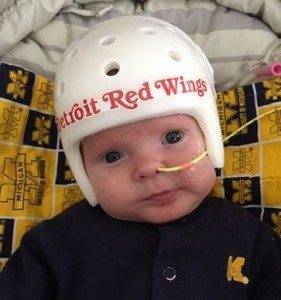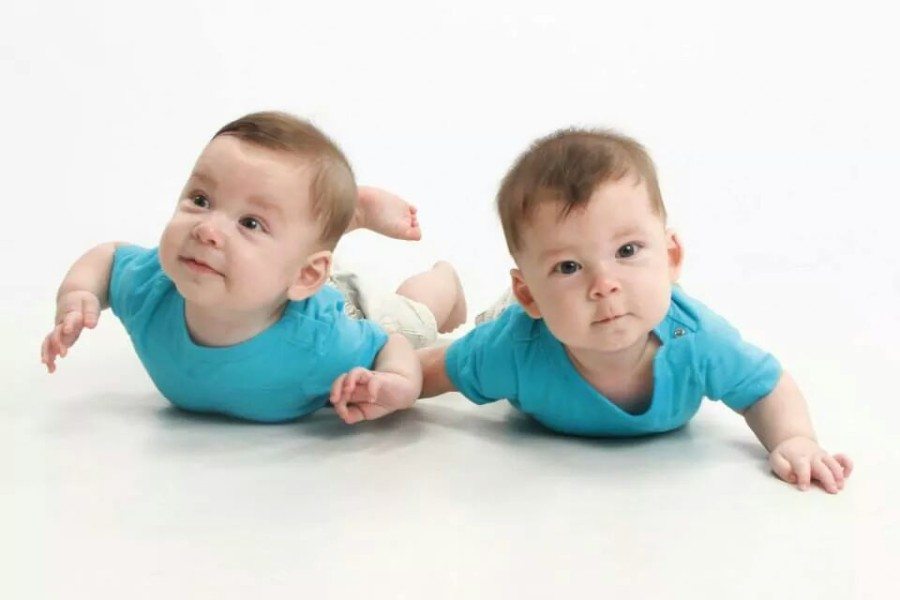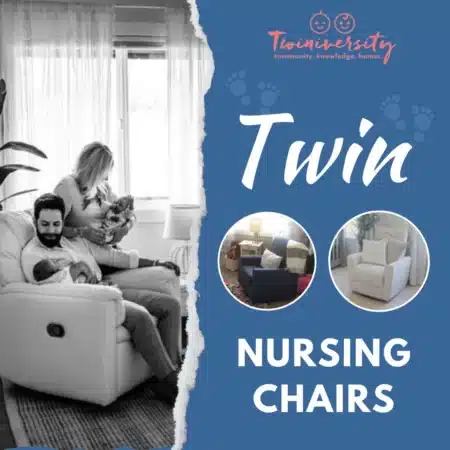Last updated on February 14th, 2024 at 04:55 pm
Picture this: you fall asleep in the recliner watching reruns of Friends one night and wake up a few hours later with your head in the strangest position. You wonder, “How on Earth could I have slept like that?!” You slowly crank your head back around through the terrible pain in your neck, knowing you will be sore for a few days. Now imagine you had stayed in that position for days or even weeks. This can happen to our unborn children: towards the end of the pregnancy they’re getting bigger and running out of space to move around (especially if they’re sharing that limited space with anyone else) so their heads can end up in some funky positions. Like us, their necks can be sore, tight, and because their muscles are pretty weak any way, they have even more trouble moving out of that position than we do. Yes, our precious littles can develop torticollis. While that may sound like a horrible, crippling disease, the big medical name typically signifies a disorder no more life-altering than our impromptu nap injury. Torticollis is very treatable and will not have any long-term effects on your child as long as it’s caught and treated early.
There are two main causes of torticollis. Limited space in utero can cause restricted neck movement and lead to tightness or it can be acquired after birth due to poor positioning. If your child is born with it, you treat it. If your child wasn’t born with it, you can prevent it by ensuring they aren’t stuck in the same swing, bouncy seat, or other device in the same position all the time. Since newborns can’t move their own heads well, they depend on us to make sure they don’t spend 24 hours in a day with their head turned to the right or tilted to the left. Adequate tummy time also helps significantly as it puts pressure on different areas of the head (which helps avoid the dreaded “flat spot”) and helps develop their muscle strength. While children should always be put to bed on their backs, it is important to give them tummy time during the day while you’re awake and they’re in your line of sight to ensure they’re safe and nothing is obstructing their airway. My favorite way of starting tummy time when my boys were newborns was to sit in the recliner with them on my chest. As they got older and stronger I would recline further back to make them work harder to lift their heads up. It was a good work out for them and I enjoyed the extra cuddle time!

There are two parts to torticollis; a tilt and a rotation, and your baby can have either one or both of them. The most common restriction we see is the child’s head will tilt to one side and be turned toward the opposite side. However, it’s possible for the tilt and the rotation to be toward the same side. Sometimes babies will have a preferred position without having true torticollis. For example, one of my twins always wanted to look left. I could stretch his neck so he was looking all the way to the right and when I held up a toy I could get him to look all the way to the right, but his preferred position was looking left. My best guess is that’s how he was positioned before birth so it’s just where he’s comfortable. This is not torticollis…yet. But if you continue to let a kid stay in one position all the time they’ll end up just like you would after your ill-fated Friends binge. So, if you notice your kiddo is always putting their head in the same position but their motion is the same as the other side, make an effort to change it as often as possible but rest assured they don’t have a problem. Break the habit early before it can become one.

True torticollis is present when not only does your baby keep their head in the same position, but they can’t move their head out of it and you can’t stretch it there either. For example, if my son was always looking left and when I tried to turn his head to the right it wouldn’t go as far and felt tight or seemed to cause him pain. Quite often you can rub their necks and feel a tight lump or band. If this is the case, you need to encourage them to get their head in the opposite direction but you also need to schedule an appointment to see their pediatrician. While the vast majority of torticollis cases are purely muscular, they can be an early symptom of neurological, musculoskeletal or visual problems and do need to be treated. Most pediatricians will send you to a physical therapist who can assess your baby and design some stretches and suggest some positioning and other changes to help stretch out their tight muscles, strengthen their neck, and normalize their motion.
Do not delay or try to treat this at home yourself. While the treatment is usually very easy and is done mostly at home, it’s important that you do it correctly and rule out any other contributing factors. Also, as babies get older they become more opinionated and will not allow you to stretch them as much so you need to nip this in the bud as soon as possible. The longer a child has torticollis the more likely they are to develop a flat spot on their head. Severely tight muscles and flattening of the skull (plagiocephaly) can also cause facial asymmetry: one eye or ear can become lower than the other, one cheek may be fuller, etc. Babies have soft spots on their heads to allow growth but if they’re growing in a bad direction, these changes to their head and face shape can become permanent as their soft spots close. Also, if your child doesn’t want to cooperate with the stretches your physical therapist should have some more sneaky ways of getting your child the necessary motion without them even realizing it. We’ve done this a lot so we have some tricks up our sleeves to help. We typically have until a child’s first birthday to correct torticollis, and after that conservative treatment (physical therapy) is unlikely to be effective and more drastic measures may need to be taken (surgery). In more severe cases your child may also need to be considered for bracing and injections.

So once you’ve made a call to your pediatrician, there are a few things you can start doing at home. The first and most obvious treatment is to reposition your baby whenever they get in their preferred spot. Using my son as an example again, every time he turned his head to the left I would straighten it out. Yes, eventually they will move it right back, but this will still help reduce the amount of time spent in that position. The longer they’re in the position, the tighter their neck is getting and the more pressure they’re putting on their head to cause a flat spot. If your baby is a little older and is really fighting your attempts to re-position while they’re awake, wait until they’re deeply asleep and move their head then. Set up all their toys, yourself, and anything else they are interested in looking at so it’s on the side you want them to look toward. If they are bottle fed, hold them so they have to turn their head to get their bottle.
If your child is cooperative, you can stretch their head into the opposite direction they prefer to keep it in. Let’s say your child likes to look left: turn their head all the way to the right and hold it 5-10 seconds and do that a few times with every diaper change. If their head tends to tilt to the right, stretch it over to the left. The more frequently you do this, the sooner you will get things stretched out and back to normal. If your child is fussing, fighting the stretch, or seems to be in pain then stop and wait until they’re in a better mood and can do it without discomfort. There are a lot of other components to successful torticollis treatment that need to be done by and/or under the supervision of a physical therapist, but this should at least get you started until you can see your doctor.
It may seem like cruel irony that parents of multiples, who are already busier than singleton parents, are also more likely to have kids who need extra attention. I already have twice as much work to do as other parents and now you’re telling me I have to find EXTRA time to do exercises? Sure. If one or more of your babies is diagnosed with torticollis, take a deep breath and remember that at least it’s a very correctable problem and while it requires some extra work on your part, your baby will likely suffer no ill effects or even remember it.
Related Articles
- So Your Baby Might Need a Helmet
- Identifying and Managing Plagiocephaly and Torticollis in Infants
- The Story Behind Flat Head Syndrome
Are You a New Twin Parent?
Check out Natalie Diaz’s book:
“What To Do When You’re Having Two
The Twin Survival Guide From Pregnancy Through the First Year”
In What to Do When You’re Having Two: The Twins Survival Guide from Pregnancy Through the First Year, national twins guru and founder of Twiniversity (and twin mom herself!) Natalie Diaz provides a no-holds-barred resource about life with twins, from pregnancy and birth all the way through your duo’s first year of life.
Accessible and informative, What to Do When You’re Having Two
is the must-have manual for all parents of twins.








